- Blog
- Affiliate Marketing Conversion Rate Benchmarks & Best Practices
Affiliate Marketing Conversion Rate Benchmarks & Best Practices
-
Barbara Bartucz
- Conversion
- 6 min read
Table of Contents
Starting an affiliate marketing journey for your ecommerce store is not just about getting partners to sign up—it’s about making sure they do well, too.
Imagine you have lots of affiliates excited to work with you, but then your website doesn’t turn visitors into customers. Bad news.
In this article, we’ll talk about why affiliate conversion rates matter and how you can boost yours.
Let’s dive in!
Why is affiliate marketing conversion rate important?
Let’s start by looking at why affiliate conversion rates matter.
First, if you can’t show potential affiliate partners that they’ll earn money with your brand, it’s going to be tough to get them on board.
Second, even if you manage to convince them, if your affiliates advertise your website but the visitors they send aren’t making purchases, they won’t see a positive return on their investment. This could ultimately lead to losing them.
This shows why it’s so important to keep an eye on your affiliate conversion rate.
What is a good conversion rate in affiliate marketing?
What counts as a good conversion rate for affiliate marketing can vary a lot.
It depends on several factors, like what kind of products you’re selling, where your website traffic comes from, how well your affiliates promote your products, and what goals you’ve set for your affiliate program.
That being said, the average affiliate conversion rate is between 0.5% to 1%.
If you can achieve an average conversion rate of 1% to 5%, that’s generally considered “good.”
However, some affiliates might get higher conversion rates, especially if they target interested audiences or offer attractive deals.
How to boost your affiliate marketing conversion rates?
So the natural question becomes: how can you boost your affiliate conversion rates?
We’re here to show you 5 tips on how to convert visitors into paying customers and maximize your affiliate marketing success. Let’s dive in!
1. Personalize landing pages
Customizing landing pages for your top referral partners can significantly increase conversions and revenue.
How?
For starters, it enhances the visitor experience and strengthens your relationship with affiliates. By demonstrating that you value their traffic through personalized pages, you encourage them to keep sending visitors your way.
Let’s take a page from AG1’s marketing playbook, and how they personalize their landing pages for their affiliates.
This landing page is for visitors who arrive from The Tim Ferriss Show podcast. They see a personalized message at the top: “Recommended by Tim Ferris” plus the headline “Tim’s All-in-One Daily Supplement” and a photo of Tim.
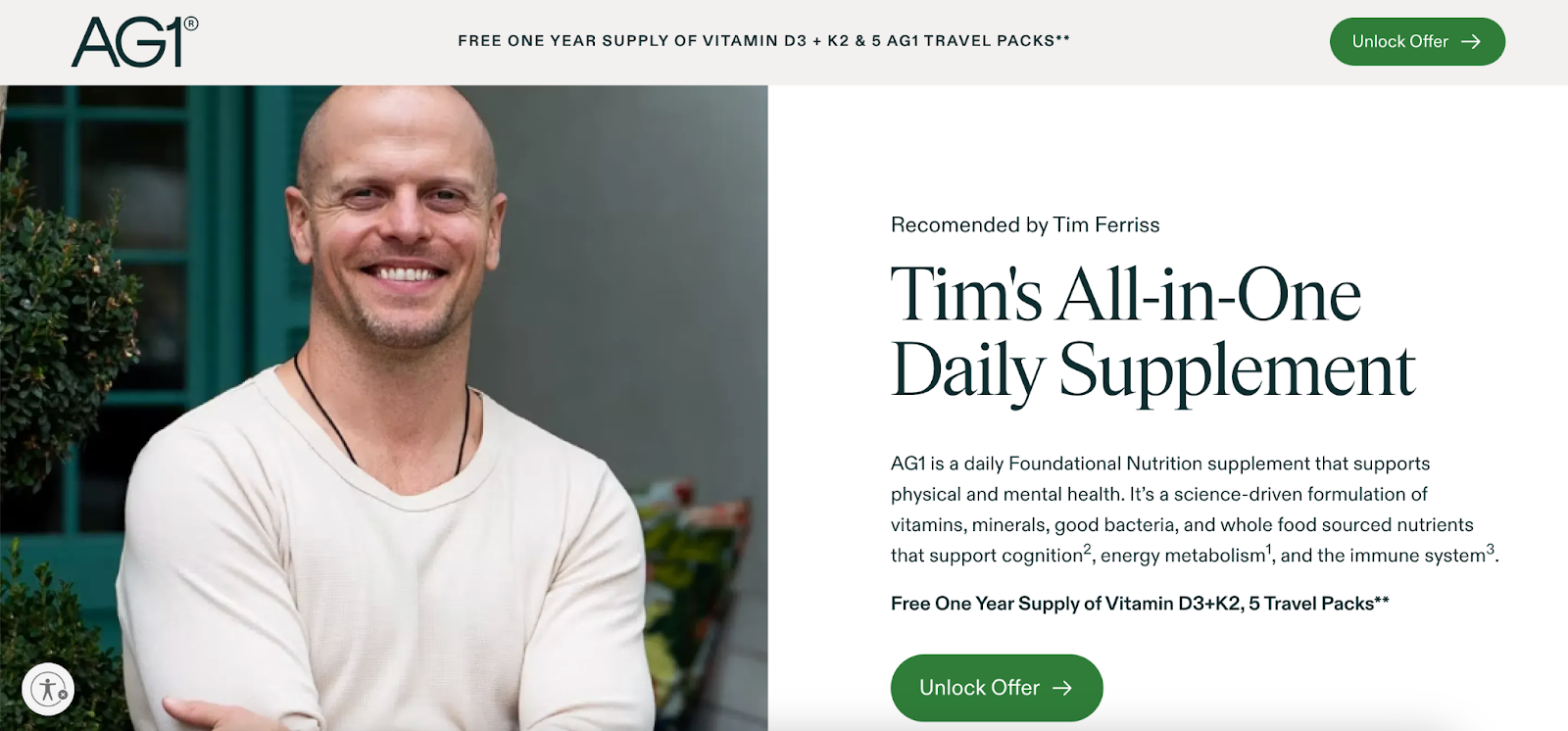
Want to run a similar campaign? The good news is that you can easily do this with OptiMonk.
Here’s a step-by-step guide:
- Create a new Dynamic Content campaign.
- Use the point-and-click editor to make the necessary modifications. Include details like the influencer’s name and any discounts your clients will receive because of the influencer.
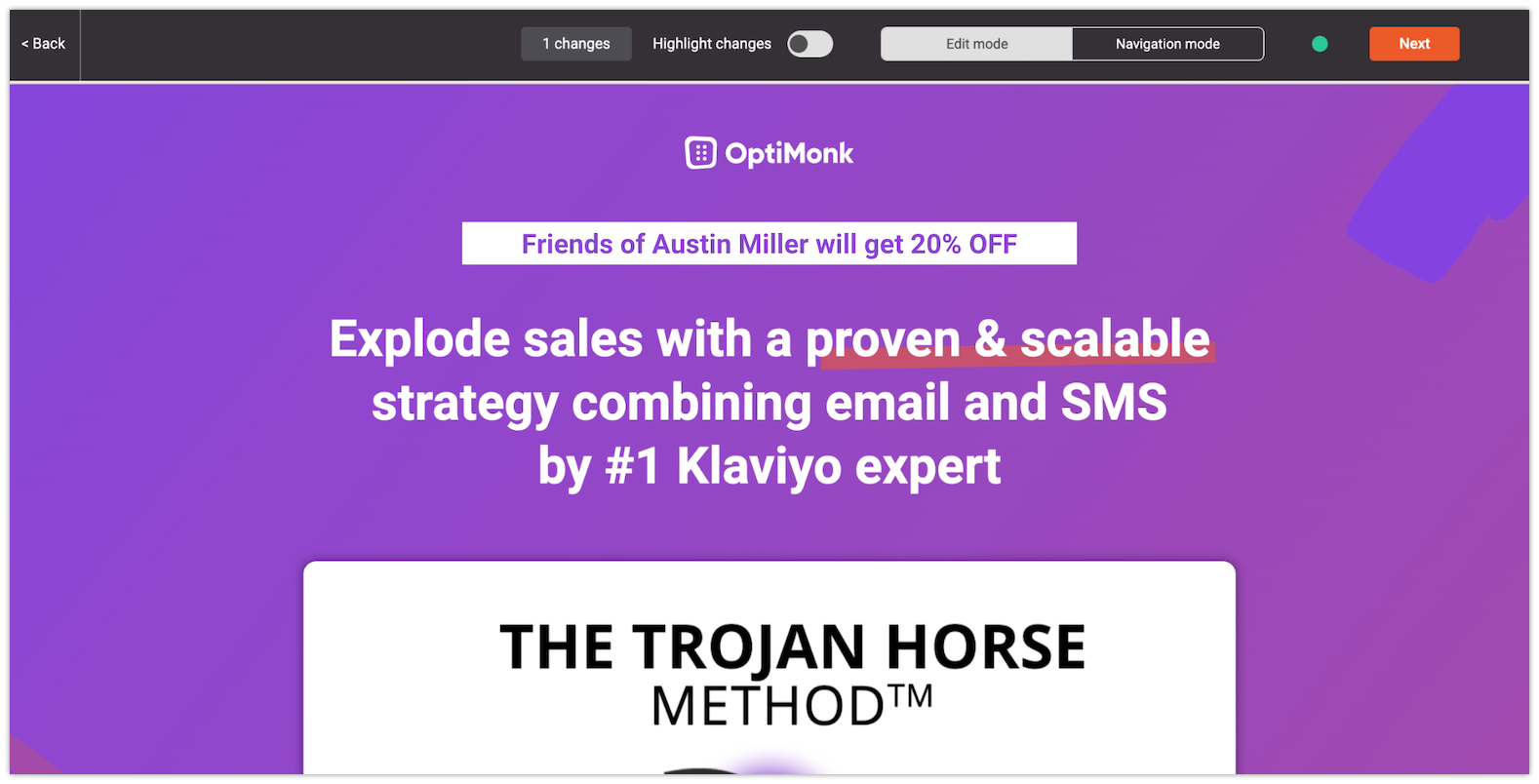
To ensure your campaign reaches the right audience, target it specifically to visitors who have reached your site through the affiliate partner.
- Set up the campaign to display only to visitors who have arrived via the affiliate partner’s URL.
- Use the “Visited URL” rule to achieve this targeting. This way, only people who’ve arrived through the designated affiliate link will see your campaign.
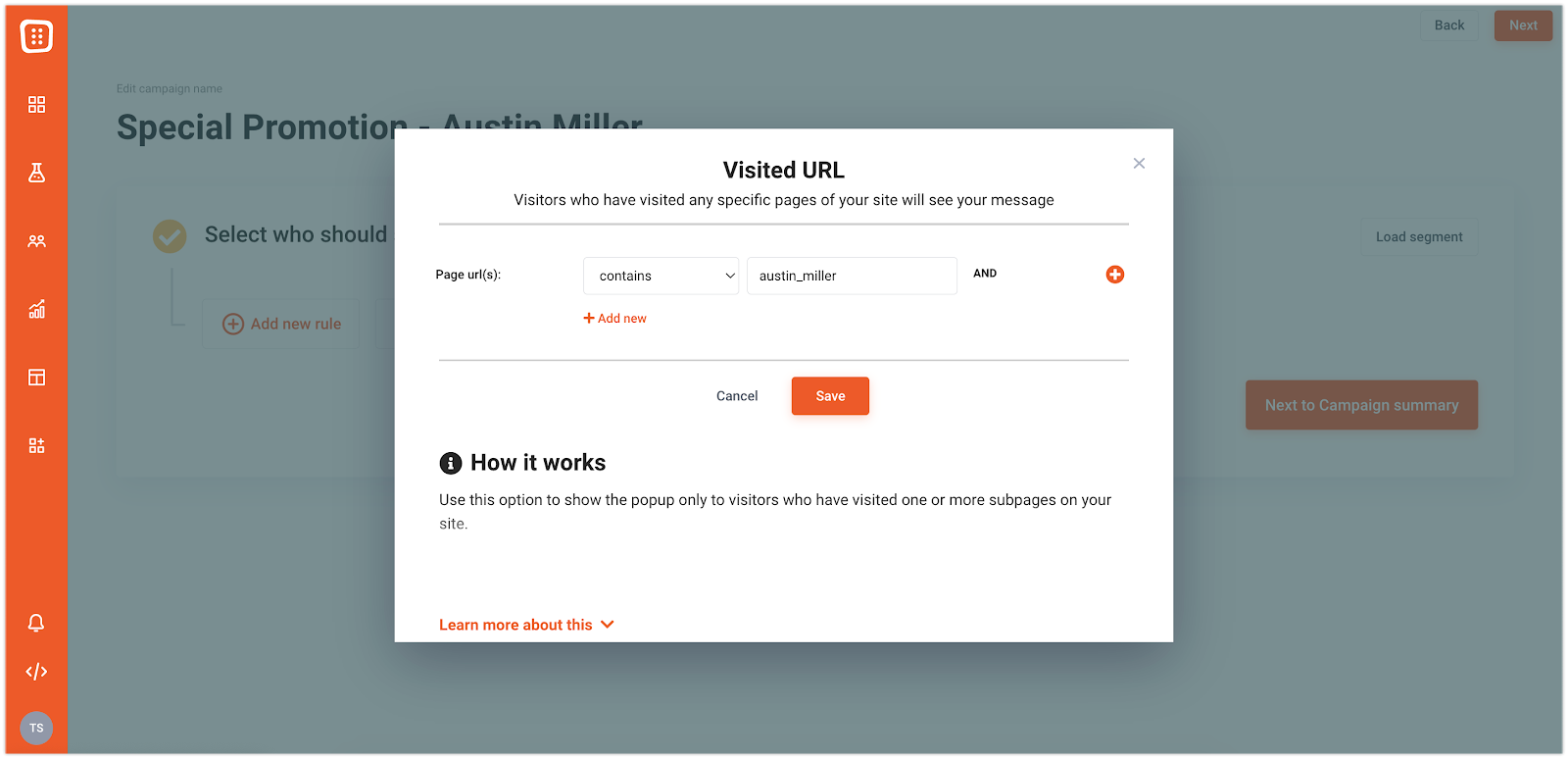
2. Personalize your welcome popups
Another effective way to increase affiliate conversion rates is by displaying personalized welcome messages to visitors who arrive through the referral partner’s link.
By including the referral partner’s name in the popup message, visitors feel like they’re receiving a special offer tailored to them.
OptiMonk’s URL targeting feature makes implementing this strategy simple. Utilizing this feature can increase conversion rates by up to 50%.
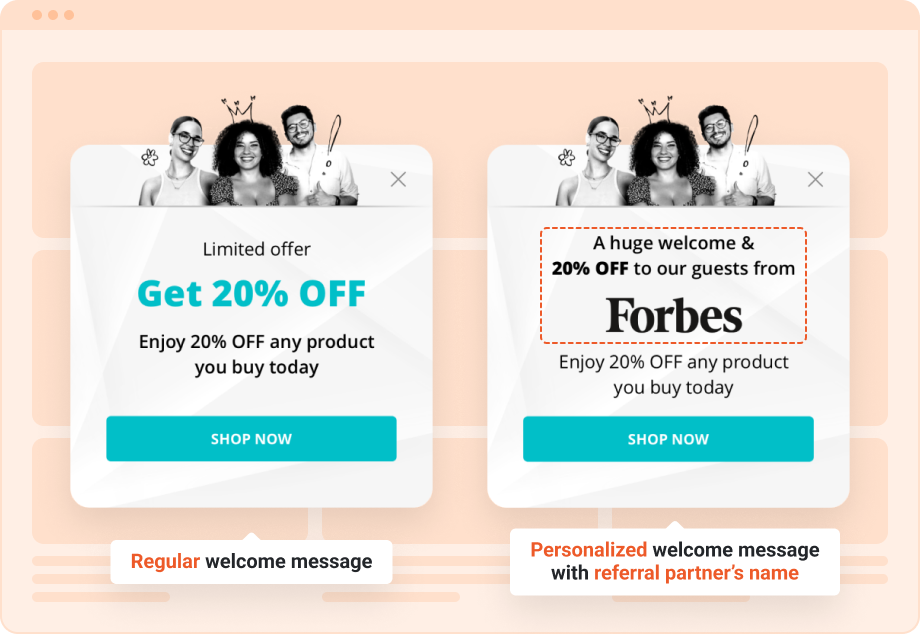
3. Optimize product pages
If your affiliate marketing efforts drive traffic directly to your product pages, it’s crucial to ensure these pages convert visitors into customers.
Sapsan Sklep, a Polish ecommerce store, realized that engaging content was missing from their product pages, which was leading to low conversion rates.
Before optimization, their product landing pages lacked compelling content…
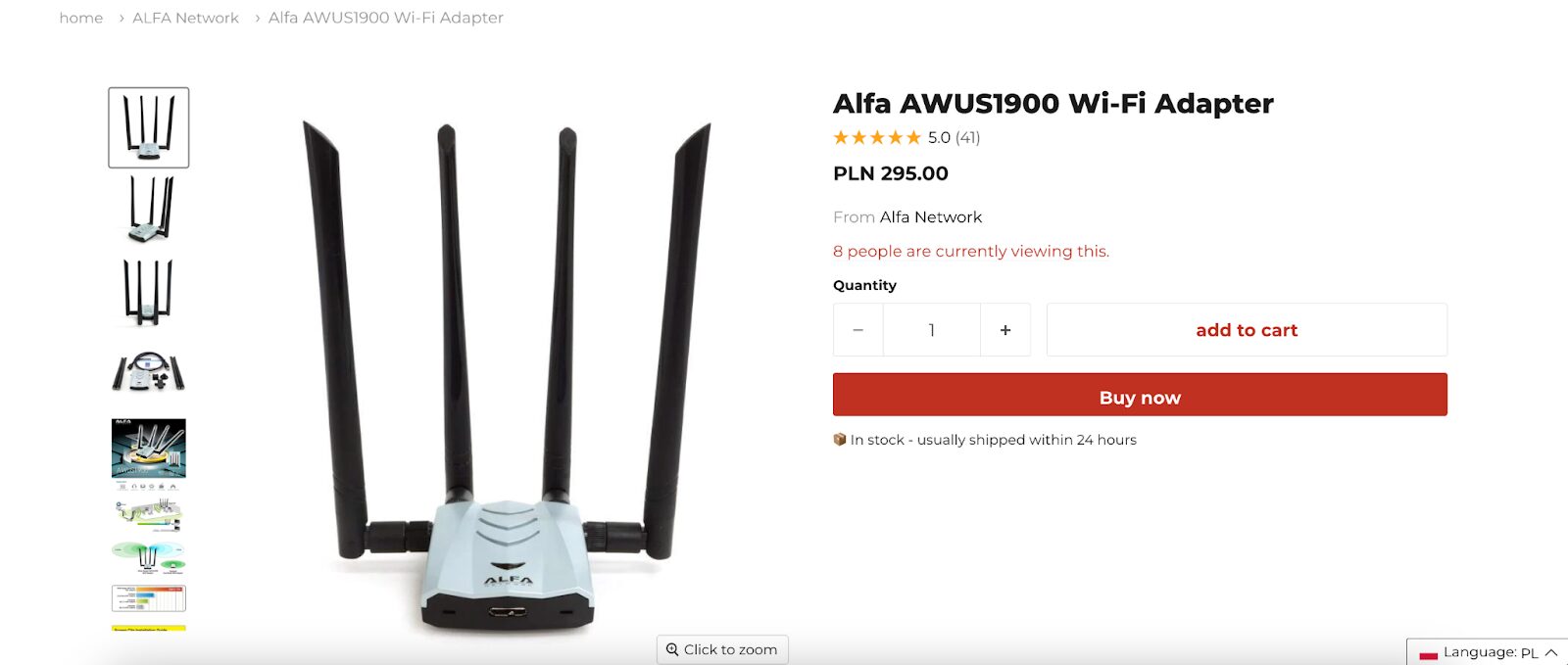
With a few strategic tweaks, this is what they looked like after optimization:
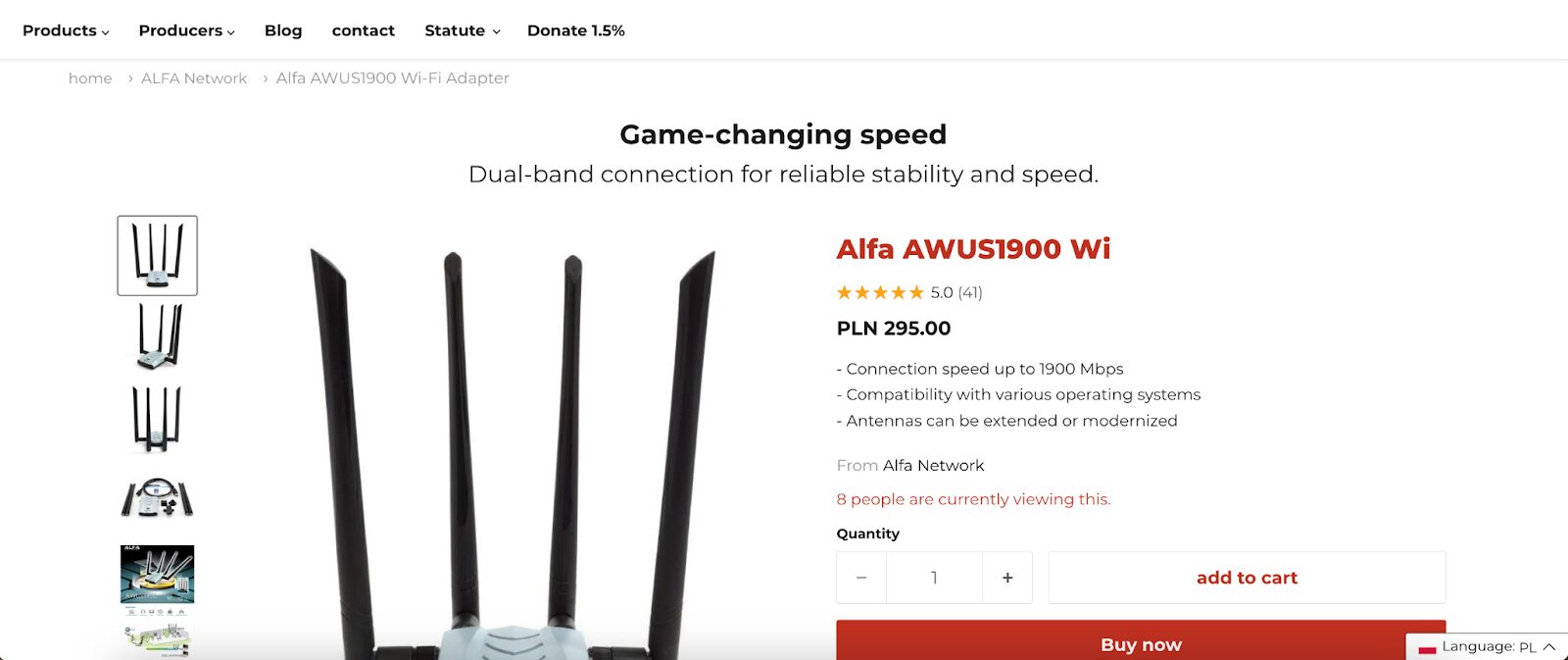
They implemented benefit-driven subheadlines, catchy slogans, and bullet-point lists on thousands of product pages.
They achieved all this with the help of Smart Product Page Optimizer, our AI-driven tool.
The results were impressive: a 13% increase in order numbers compared to the previous period, and a notable 16% increase in revenue.
Learn how Sapsan Sklep increased their revenue by 16% with product page optimization.
4. Remind visitors about their affiliate coupons
Don’t let visitors forget about those sweet deals!
Use reminder sticky bars to nudge website visitors toward using available coupons.
Reminder sticky bars can help you boost conversion rates by staying at the top or bottom of the page, reminding users about their coupons.
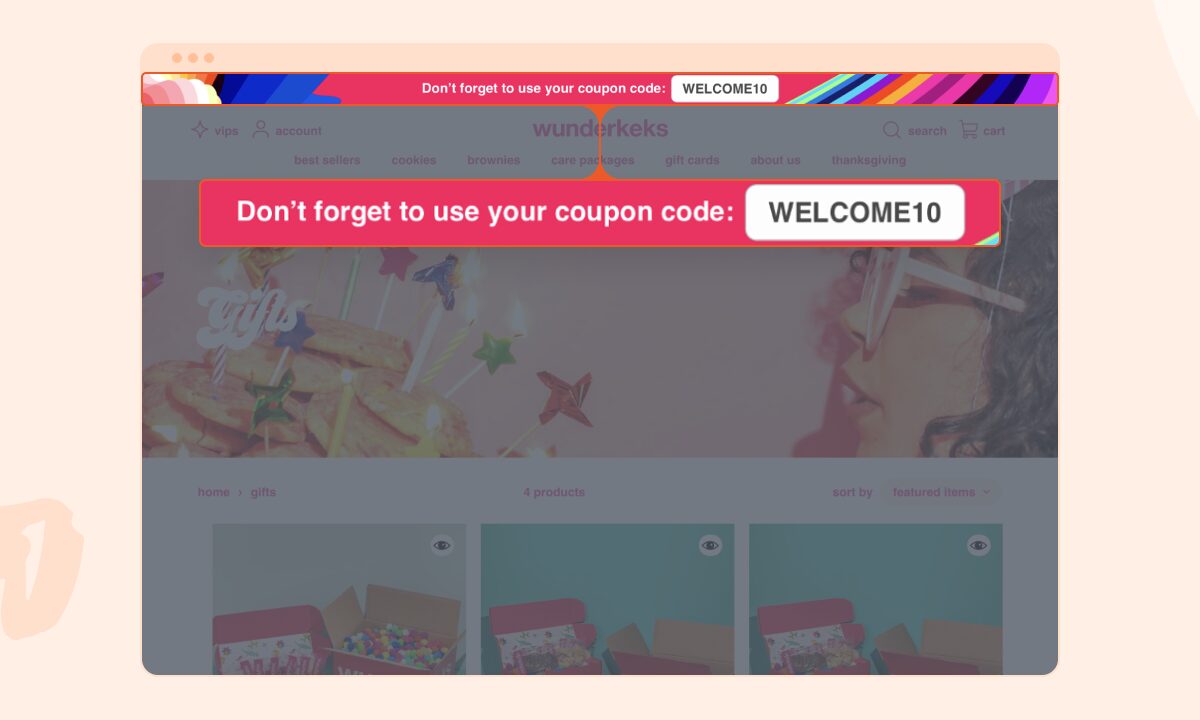
Check out some Discount Reminder sticky bar templates to get started.
5. Highlight the most relevant products on exit-intent
Here’s the last method that you can use to boost affiliate conversions with your potential customers.
If visitors from your affiliate links aren’t buying from your site and end up leaving, it’s probably not because of your prices.
Craft Spirit Shop faced difficulties in converting visitors on their product pages.
Instead of resorting to discounts, they tried a different approach. They decided to help visitors discover other products they might be interested in by recommending items similar to the ones they viewed.
For example, when visitors viewed their Buffalo Trace product page but were about to leave…
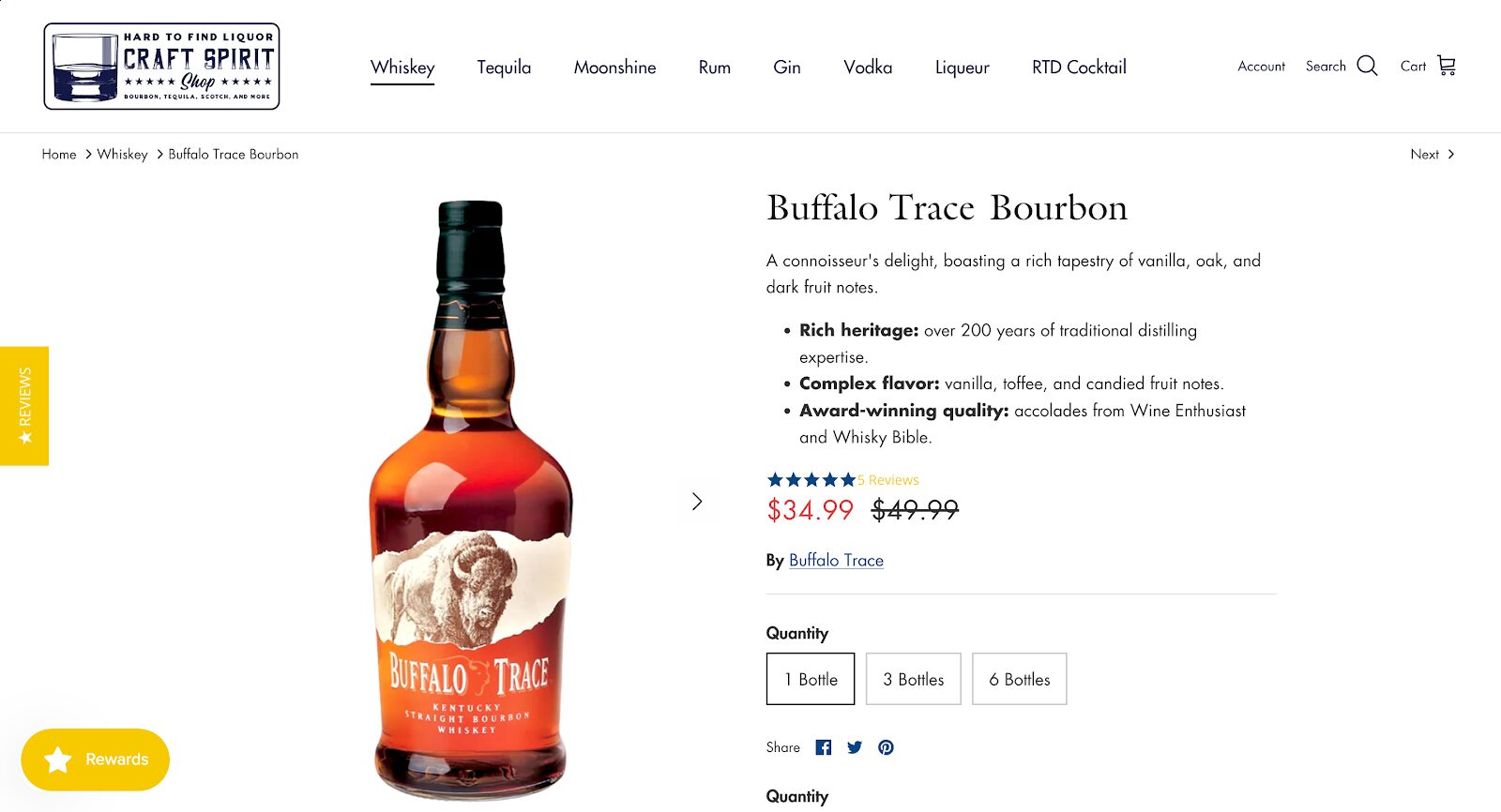
They showed them an exit-intent popup suggesting award-winning bourbons:
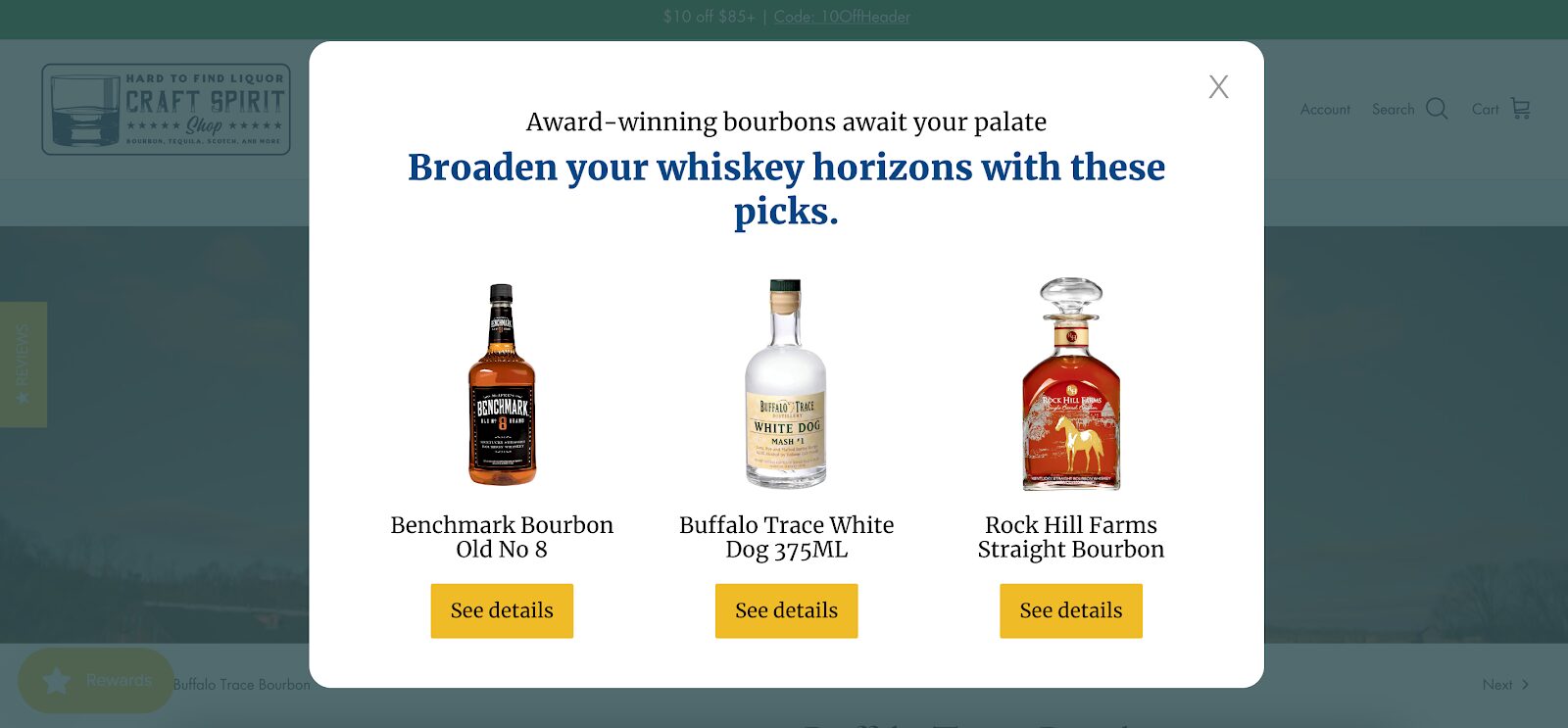
They achieved this with the help of our AI-powered Smart Recommender popup. The suggestions and headlines were personalized based on visitors’ browsing habits across more than 2000 product pages.
As a result, those who saw these personalized popups made purchases 38.5% more often, boosting the ecommerce store’s conversion rate.
Additionally, they spent 77.9% more money, significantly increasing revenue per person.
Find out more about their success here.
FAQ
What is an affiliate program?
An affiliate program is a marketing arrangement where a business rewards affiliates for promoting their products or services and driving sales or other desired actions. Affiliates earn a commission for each sale or action generated through their unique affiliate links or codes.
What is the affiliate marketing conversion rate?
The affiliate marketing conversion rate refers to the percentage of visitors who complete a desired action, such as making a purchase, signing up for a newsletter, or filling out a form, after being referred by an affiliate. It measures the effectiveness of an affiliate’s promotional efforts in converting visitors into customers or leads.
How can I track affiliate marketing conversion rates?
You can track affiliate marketing conversion rates by using specialized tracking software provided by affiliate networks or using tools like Google Analytics. These tools allow you to set up conversion tracking by adding tracking codes to your website, which track when visitors referred by affiliates complete desired actions.
How do I create an affiliate link in Shopify?
In Shopify, you can create affiliate links by setting up an affiliate program app or using built-in features if available. Here’s a general outline:
- Install an affiliate marketing app from the Shopify App Store.
- Set up your affiliate program within the app, including commission rates, terms, and conditions.
- Generate unique affiliate links for each affiliate through the app’s dashboard.
- Provide affiliates with their unique affiliate links to promote your products.
- Track affiliate sales and commissions through the app’s reporting and analytics features.
Wrapping up
As you can see, affiliate marketing strategies thrive on collaboration and mutual success.
If you focus on your target audience and nurture the relationship with your affiliate marketers, you can easily boost conversions.
By tailoring your approach to meet the needs of your customers and working closely with your affiliates, you’ll create a recipe for success in affiliate marketing. Remember: teamwork makes the dream work!
Migration has never been easier
We made switching a no-brainer with our free, white-glove onboarding service so you can get started in the blink of an eye.

What should you do next?
Thanks for reading till the end. Here are 4 ways we can help you grow your business:
Boost conversions with proven use cases
Explore our Use Case Library, filled with actionable personalization examples and step-by-step guides to unlock your website's full potential. Check out Use Case Library
Create a free OptiMonk account
Create a free OptiMonk account and easily get started with popups and conversion rate optimization. Get OptiMonk free
Get advice from a CRO expert
Schedule a personalized discovery call with one of our experts to explore how OptiMonk can help you grow your business. Book a demo
Join our weekly newsletter
Real CRO insights & marketing tips. No fluff. Straight to your inbox. Subscribe now
Barbara Bartucz
- Posted in
- Conversion
Partner with us
- © OptiMonk. All rights reserved!
- Terms of Use
- Privacy Policy
- Cookie Policy
Product updates: January Release 2025








